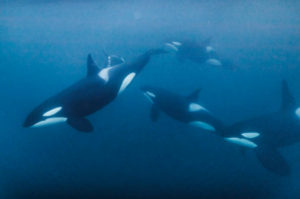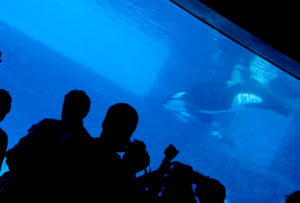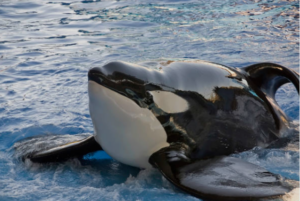Ethical Dilemmas and Public Outcry

The majesty of the oceans is home to some of the most remarkable and awe-inspiring creatures on Earth. Among these creatures, orcas, often referred to as killer whales, stand out as iconic symbols of the marine world. With their sleek black and white bodies and impressive intelligence, they have captured the imaginations of people around the globe. Yet, beneath their charismatic exterior, a controversial issue looms: the captivity of orcas for entertainment purposes.
This blog post delves into the complex and contentious topic of captive orcas, exploring the ethical dilemmas they present and the public outcry that has fueled a movement for change. We will examine the history of orca captivity, the challenges faced by captive orcas, the arguments for and against captivity, and the growing momentum toward more ethical and sustainable alternatives.
The practice of capturing and keeping orcas in captivity for entertainment purposes has a complex and controversial history that spans several decades. Understanding this history is essential in grasping the ethical dilemmas surrounding captive orcas.
The initial captures of orcas for public display can be traced back to the mid-20th century. Marine parks and aquariums sought charismatic animals to attract visitors, and orcas quickly emerged as star attractions. The first recorded orca capture took place in 1961, when the Vancouver Aquarium acquired an orca named Moby Doll. This marked the beginning of the era of orca captivity.
Following Moby Doll’s capture, a frenzy to capture more orcas ensued. The practice of live captures, often referred to as “round-ups,” involved encircling pods of wild orcas in boats and then selecting individuals for captivity. This process was highly stressful for the orcas and often resulted in the separation of mothers and calves.
Marine parks like SeaWorld in San Diego and Marineland of the Pacific in Los Angeles played pivotal roles in popularizing orca captivity. SeaWorld introduced its first orca, Shamu, in 1965, and the killer whale became synonymous with the park. The captivating performances of Shamu and subsequent orcas drew millions of visitors.
The growing popularity of orca shows also gave rise to ethical concerns. Marine biologists, conservationists, and animal welfare advocates began questioning the ethical implications of keeping these intelligent and social creatures in captivity. Concerns ranged from the ethical treatment of animals to the educational value of showcasing orcas in confined settings.
The Ethical Dilemmas of Orcas in Captivity
One of the primary ethical dilemmas surrounding captive orcas is the physical and psychological stress they endure in confinement. Orcas are highly intelligent, social animals that travel vast distances in the wild and form close-knit family groups called pods. In captivity, they are often confined to small tanks that bear little resemblance to their natural habitat, leading to physical and psychological distress.
Studies have shown that captive orcas exhibit abnormal behaviors such as repetitive circling, aggression, and even self-harm. These behaviors are believed to be indicators of profound psychological suffering caused by the stress of captivity.
Captive orcas also face a range of health issues not commonly observed in their wild counterparts. These issues include dental problems, skin conditions, and a shorter life expectancy. In the wild, orcas can live for several decades, while captive orcas often have significantly shorter lifespans.
Another ethical dilemma arises from the practice of separating young orcas from their mothers and families in the wild. These separations can be emotionally devastating for both the calves and the mothers left behind, and it raises questions about the ethics of forcibly disrupting these tight-knit family bonds.

Arguments for Captive Orcas
While the ethical concerns surrounding captive orcas are significant, proponents of the practice argue several points:
1. Education and Conservation
Some argue that keeping orcas in captivity can serve as a tool for educating the public about marine life and conservation efforts. They contend that by witnessing these majestic animals up close, people may develop a greater appreciation for marine ecosystems and become more motivated to protect them.
2. Financial Support for Research and Conservation
Marine parks claim that the revenue generated from orca shows and admissions fees can support critical research and conservation programs. According to this perspective, the funds generated by captive orcas can be channeled into initiatives aimed at preserving marine environments and wildlife.
3. Advances in Research
Captive orcas have allowed scientists to conduct research that would be challenging or impossible in the wild. This research has led to valuable insights into orca biology, behavior, and communication, which can potentially benefit wild populations.
In recent years, public sentiment regarding captive orcas has undergone a profound shift. Documentaries like “Blackfish” (2013), which exposed the behind-the-scenes realities of orca captivity at SeaWorld, played a pivotal role in raising awareness about the ethical issues associated with keeping these animals in captivity.
The film highlighted the tragic consequences of captivity, including the death of SeaWorld trainer Dawn Brancheau, who was killed by the orca Tilikum. “Blackfish” sparked outrage and prompted a wave of protests and boycotts against marine parks that held orcas in captivity.
The public outcry and mounting evidence of the suffering endured by captive orcas have led to significant changes in the industry. Several key developments mark the growing momentum toward ending the practice of orca captivity:
Under mounting public pressure, SeaWorld announced a significant policy shift in 2016. The company pledged to end its breeding program for captive orcas, ensuring that the generation currently in captivity would be the last. While the existing orcas would remain in captivity, SeaWorld’s decision marked a significant step toward a more ethical approach.
Several countries and regions have enacted legislation banning or severely restricting the captivity of orcas and other cetaceans. For example, in 2019, Canada passed the “Free Willy” bill, making it illegal to keep orcas and other dolphins in captivity. Similar laws have been enacted in the United States, the United Kingdom, and other countries.
Public pressure and awareness campaigns continue to play a pivotal role in driving change. Social media, documentaries, and advocacy organizations have amplified the voices of those advocating for the ethical treatment of orcas and other marine animals.

Ethical Alternatives and the Path Forward
As public awareness grows and ethical concerns about orca captivity persist, there is a pressing need to explore and implement alternatives that prioritize the welfare of these magnificent creatures. Here are some ethical alternatives and potential steps forward:
1. Sea Sanctuaries
One promising alternative is the establishment of sea sanctuaries where captive orcas can be rehabilitated and transitioned to more natural environments. Sea sanctuaries provide larger and more complex habitats compared to traditional tanks, allowing orcas to regain some semblance of their natural behaviors. These sanctuaries aim to strike a balance between the needs of the animals and the educational goals of the public.
Key Features of Sea Sanctuaries:
- Naturalistic Environments: Sea sanctuaries aim to recreate more natural environments, providing space for orcas to swim, dive, and engage in social interactions.
- Rehabilitation and Release: Some sanctuaries focus on rehabilitating captive orcas, with the ultimate goal of releasing them into the wild if feasible.
- Educational Opportunities: Sanctuaries can offer educational programs that emphasize the importance of protecting marine ecosystems and respecting wild orca populations.
2. Innovative Virtual Experiences
Advancements in technology offer innovative ways to provide the public with immersive and educational experiences that do not involve the captivity of orcas. Virtual reality (VR) and augmented reality (AR) technologies can transport viewers into the underwater world of orcas and marine life, allowing them to witness these majestic creatures in their natural habitats without disturbing them.
Key Features of Virtual Experiences:
- Immersive Education: VR and AR experiences provide a unique opportunity for people to learn about marine life, including orcas, in a captivating and informative manner.
- Reduced Environmental Impact: Virtual experiences eliminate the need to transport orcas or construct large tanks, reducing the environmental footprint associated with captivity.
- Global Accessibility: These technologies can be accessed worldwide, making educational content about orcas and marine conservation available to a broader audience.
3. Conservation-Focused Education
An ethical path forward includes shifting the focus of public education toward conservation and the protection of marine environments. Instead of showcasing captive orcas for entertainment, marine parks and educational institutions can emphasize the vital role these creatures play in marine ecosystems and the urgent need to safeguard their natural habitats.
Key Elements of Conservation-Focused Education:
- Marine Ecosystem Education: Emphasize the interconnectedness of marine ecosystems and the importance of preserving biodiversity.
- Promotion of Marine Conservation: Encourage visitors to become advocates for marine conservation by supporting organizations and initiatives that protect marine environments.
- Wildlife Observation: Promote responsible and respectful wildlife observation in natural habitats, such as guided whale-watching tours.
- Support for Research: Allocate resources to research efforts that contribute to the understanding and protection of wild orcas and their ecosystems.

The controversy surrounding captive orcas serves as a compelling case study in the evolving relationship between humans and animals. It reflects society’s growing recognition of the ethical responsibilities we bear toward the creatures with whom we share our planet.
While the shift away from orca captivity is a significant step in the right direction, the journey toward ethical treatment and conservation of marine life is ongoing. As we continue to learn from the past and shape the future, it is our collective responsibility to ensure that our actions align with the principles of compassion, conservation, and ethical stewardship of the natural world. The well-being of orcas and countless other species depends on it.

